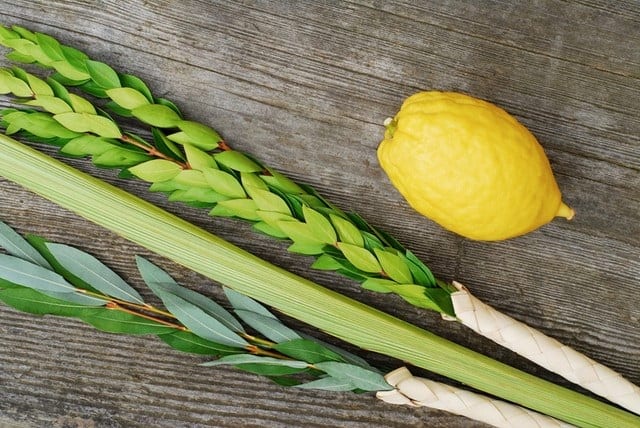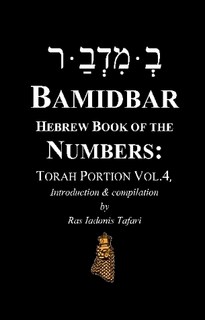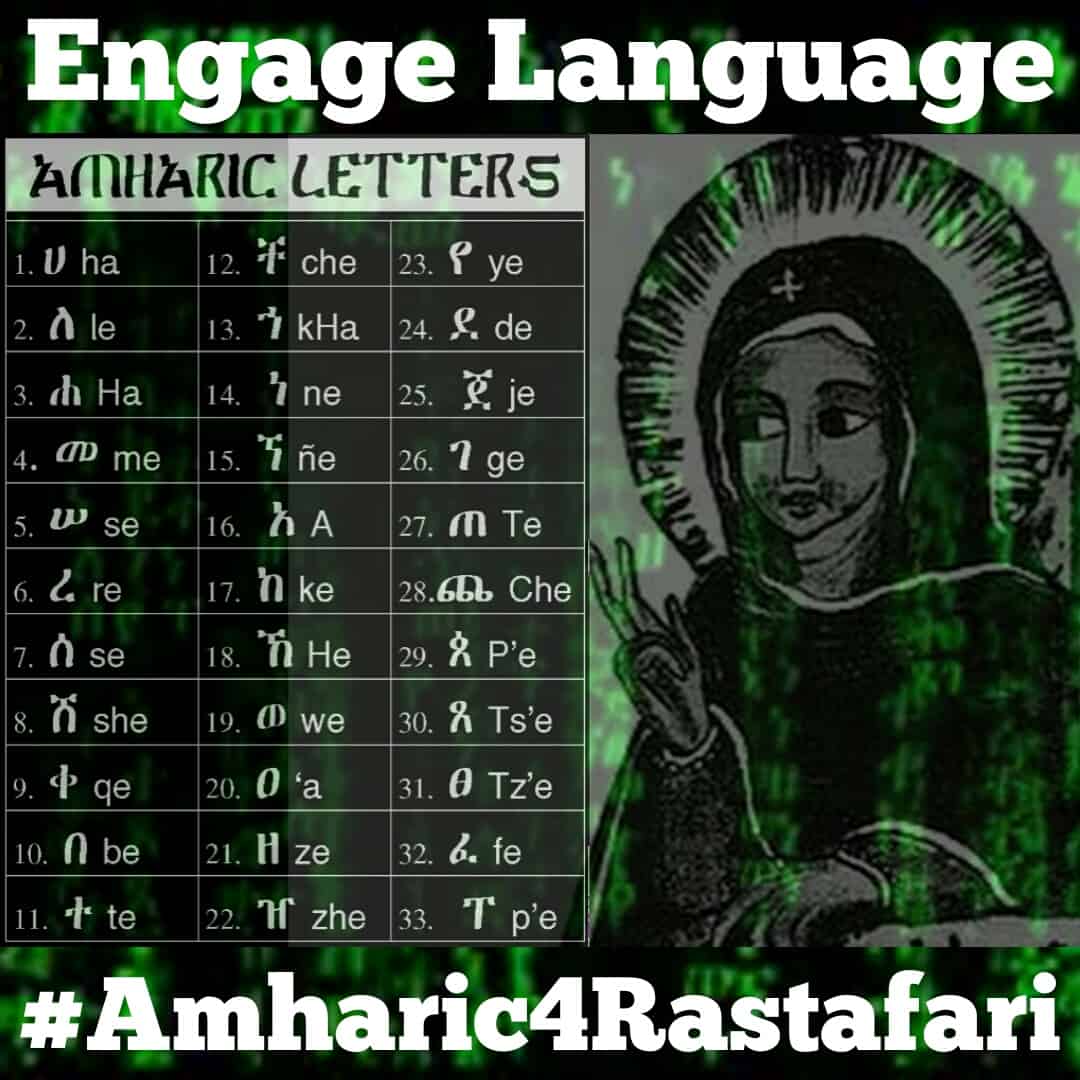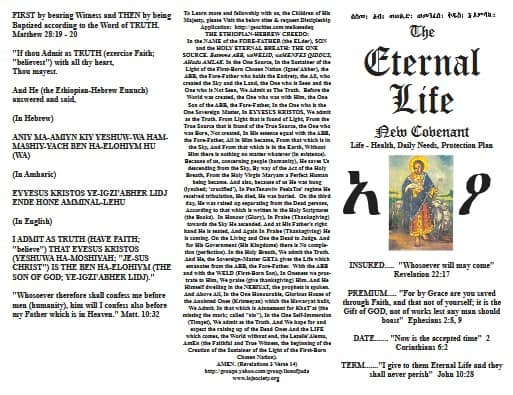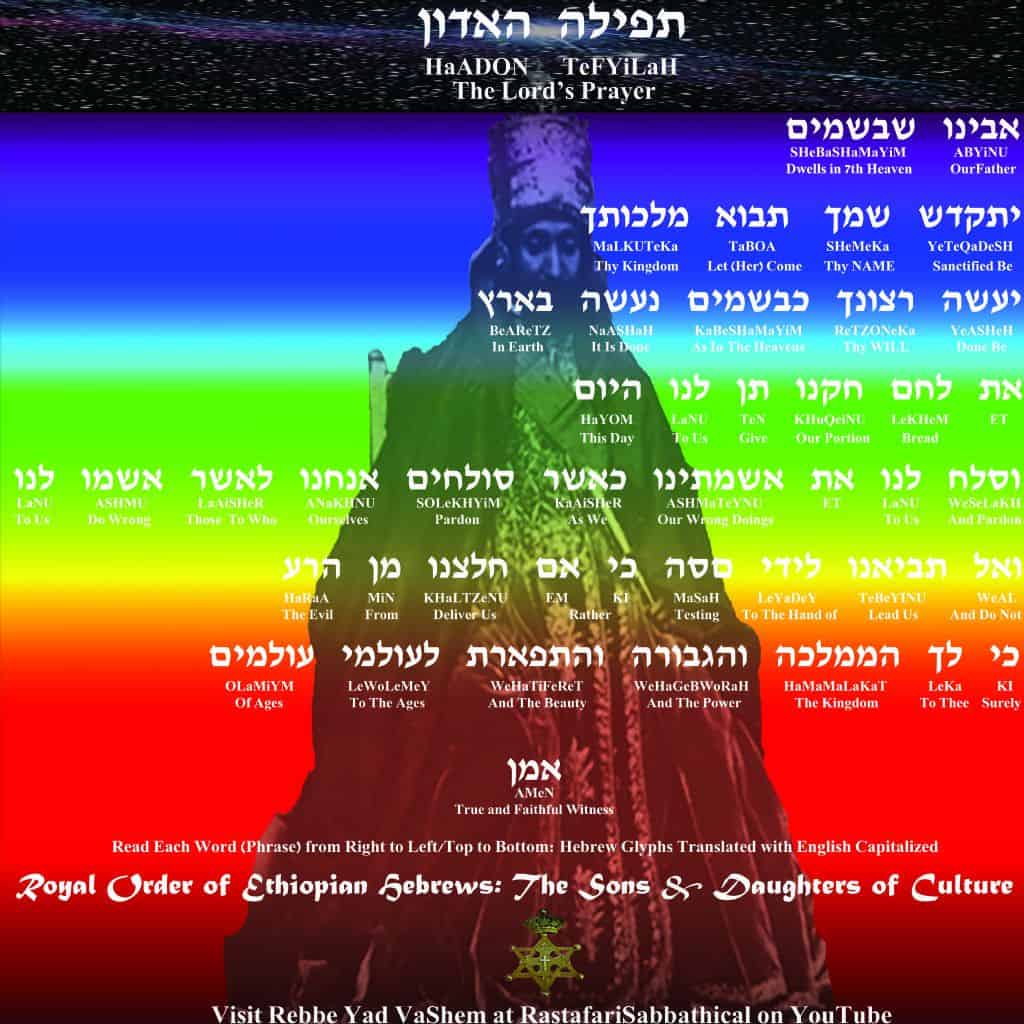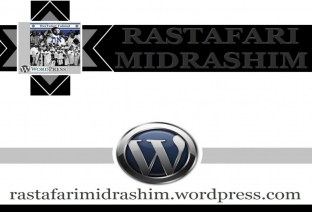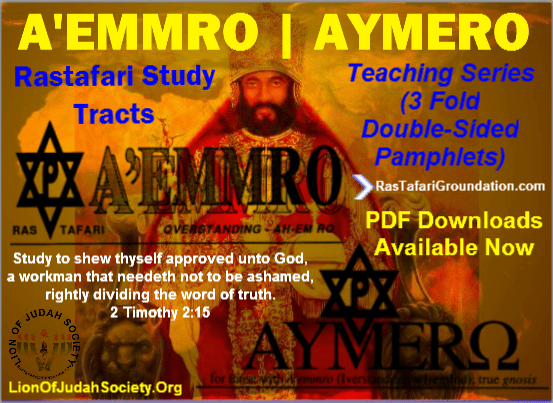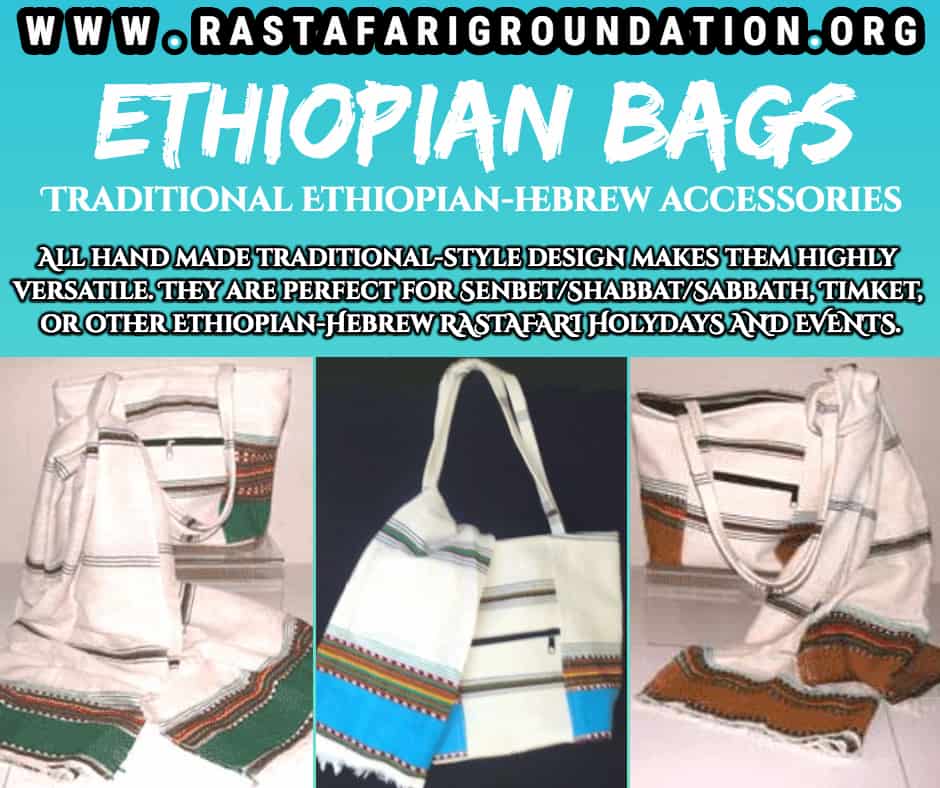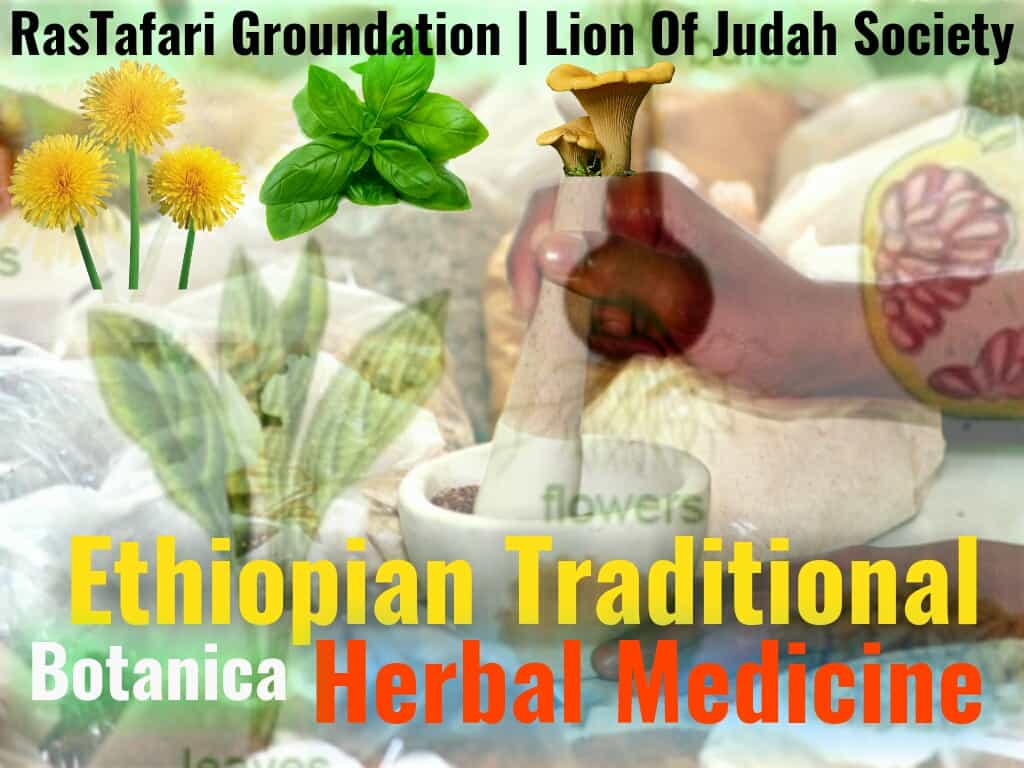Jewish Ritualism or Biblical Command?
(*)The Mystery of the “Lulav”
Why do Jewish people during the Feast of Sukkot or Tabernacles carry a “lulav” — four special species of plants — and wave it back and forth as they march in a procession around the synagogue? Is there something Biblical about this custom? Or is this just a “ritual” that stems from either “legalism” or “tradition,” and nothing we as Christian Israelites should be concerned with — even though we observe the Annual Holy Days?
“Lulav? What in the world is that?” many people would ask, or think, when they first heard the word. ‘Is it Biblical?” others would ask.
Why is there so much ignorance and lack of understanding about the “lulav,” in supposedly Christian Israelite circles, including those churches which profess to observe the “Feast of Tabernacles”?
Yet every year, at the Feast of Tabernacles, Jewish people purchase a special bundle of branches of various plants, composed of a palm branch, three myrtle branches, two willows, along with an “etrog” or citron — called a “lulav” — and then use them in worshipping before the LORD!
But why do they do this? And why are Christian Israelites, who even claim to observe the Feast of Taberncacles, totally ignorant of this ancient custom?
What IS the “Lulav”?
What about this matter of “lulavs”? What are they? What does the “lulav” have to do with observing the Feast of Tabernacles? Is it mere ritualism? Legalism? Jewish “tradition”? Or approved Biblical command — custom — and something we of Israelite descent should take note of, and observe, during the Feast of Tabernacles? Certainly, if YEHOVAH God Almighty says “DO IT!,” then we should jump up and DO it — without hesitation, equivocation, or hemming or hawing! Who are we to refuse a direct commandment of YEHOVAH GOD? YEHOVAH is the FINAL AUTHORITY!
As Solomon warned: “There is a way that seemeth right unto a man, but the END thereof are the ways of DEATH” (Proverbs l4:12; 16:25).
What does YEHOVAH’s Word have to say about the “lulav”? Where does modern Rabbinic Judaism come up with the idea of waving a collection of branches before the LORD during the Feast of Tabernacles? Let’s notice!
The original instructions YEHOVAH God gave on this matter are found in Leviticus 23. We read, beginning in verse 39, the following:
“v. 39. Also in the fifteenth day of the seventh month, when ye have gathered in the fruit of the land, ye shall keep a feast unto the LORD seven days: on the first day shall be a sabbath, and on the eighth day shall be a sabbath.
“v. 40. And ye shall take on the first day the boughs of goodly trees, branches of palm trees, and willows of the brook; and ye shall REJOICE before the LORD your God seven days.”
Now notice! The Septuagint makes this even more clear:
“v. 39. And on the fifteenth day of this seventh month, when ye shall have completely gathered in the fruits of the earth, ye shall keep a feast to the Lord seven days; on the first day there shall be a rest, and on the eighth day a rest. And on the first day ye shall take goodly fruit of trees, and branches of palm trees, and thick boughs of trees, and willows, and branches of osiers from the brook, TO REJOICE before the LORD your God seven days in the year.”
Do you see the meaning of this commandment? YEHOVAH instructs His people Israel to take these fruits and branches, and to REJOICE before Him! How simple can it be? Yet how many of YEHOVAH’s people today even begin to have an inkling of what this commandment of YEHOVAH God is all about?
Going on, then:
“v. 41. And ye shall keep it a feast unto the LORD seven days in the year. It shall be a STATUTE FOR EVER in your generations: ye shall celebrate it in the seventh month.
“v. 42-43. Ye shall dwell in booths seven days; all that are Israelite born shall dwell in booths: That your generations may know that I made the children of Israel to dwell in booths, when I brought them out of the land of Egypt: I am the LORD thy God” (Leviticus 23:39-43).
Now let’s notice one important discovery, right from the beginning. In verse 40 YEHOVAH tells those of us of Israelite descent to take unto us on the first day of the Feast the boughs of various trees (which the Jews refer to as the “lulav”), and we are to REJOICE WITH THEM SEVEN DAYS.
Then in verse 41, YEHOVAH RECAPITULATES the Festival instructions, and says we are to observe the Feast itself SEVEN DAYS, during the seventh month (the month of Tishri). He says we are to do this FOREVER. Notice that this verse ends the train of thought. Verse 40 tells us to take various branches, and rejoice seven days. Then YEHOVAH says we are to observe the Feast for these seven days, for ever — a perpetual covenant between YEHOVAH God and His people Israel.
But then, in verse 42, YEHOVAH introduces a NEW INSTRUCTION — a new thought, separated from the instructions to take various branches, and to rejoice with them, by the summary instructions of verse 41 regarding observing the Feast “forever.” Now, in verse 42, YEHOVAH says we are to “dwell in booths seven days.” Why did YEHOVAH add this new instruction?
“That your generations may know that I made the children of Israel to dwell in booths, when I brought them out of the land of Egypt: I am the LORD thy God” (verse 43).
The Septuagint has this passage thus:
“Seven days ye shall dwell in tabernacles: every native in Israel shall dwell in tents, that your posterity may see, that I made the children of Israel to dwell in tents, when I brought them out of the land of Egypt: I am the LORD your God” (v. 42-43).
Notice! This is NEW instruction! It is not defining the “boughs” of verse 40 — it says nothing about the boughs of verse 40. Rather, it is completely separated from that verse and those boughs by verse 41, which recapitulates the basic instructions of celebrating the Feast! Therefore, verse 42, which mentions dwelling in booths, has no direct connection with verse 40, which discusses taking boughs and REJOICING BEFORE THE LORD seven days!
The Jewish rabbis noticed this distinction, and therefore concluded that we are to take these boughs of verse 40, and use them in REJOICING before the LORD! During the time of the Second Temple — from 445 B. C. to 70 A.D. — they took these boughs to the Temple, and waved them “before the LORD” during the Temple services, especially the “Water Drawing Ceremony, ” every morning of the Festival. The priests and Levites themselves also waved the “lulavs” before the LORD, at the Temple, as they paraded in a procession around the Altar, each morning during the Feast!
The Voice of Josephus and History
The Jewish historian Josephus, who lived in the first century, and who was himself of the priestly line, and a Pharisee, in his opus Antiquity of the Jews, writes about the Feast of Tabernacles, and the custom of carrying fruit and branches from trees — the “LULAV” — as an integral part of the celebration of the Feast of Tabernacles!
Notice!
“Upon the fifteenth day of the same month, when the season of the year is changing for winter, the law enjoins us to pitch tabernacles in every one of our houses, so that we preserve ourselves from the cold of that time of the year; as also that when we should arrive at our own country, and come to that city which we should have then for our metropolis, because of the temple therein to be built, and keep a festival of eight days, and offer burnt offerings, and sacrifice thank offerings, THAT WE SHOULD THEN CARRY IN OUR HANDS A BRANCH OF MYRTLE, AND WILLOW, AND A BOUGH OF THE PALM TREE, WITH THE ADDITION OF THE POME CITRON” (Ant., bk.3, chap. 10, par.4).
How clear it should be that Josephus, a sage and historian among the Judahite people of the first century, who fought in the war against Rome in 69-70 A.D., knew the customs of his people, and plainly wrote that they celebrated the Feast of Tabernacles by pitching “booths” or “tabernacles,” and by carrying “in their hands a branch of myrtle, and willow, and a bough of the palm tree, with the addition of the pome citron” — the “lulav”!
This was a commanded, integral part of the celebration of YEHOVAH’s Feast!
Josephus further alludes to this custom in his discussion of the reign of Alexander, about one hundred years before the Messiah. This “king-priest” was of the party of the Sadducees, who rejected the oral law handed down by the Pharisees. Josephus records an incident which occurred during the Feast of Tabernacles during the reign of Alexander Jannaeus (103-76 B.C.):
“As to Alexander, his own people were seditious against him; for at a festival which was then celebrated, when he stood upon the altar, and was going to sacrifice, the nation rose upon him and PELTED HIM WITH CITRONS, [WHICH THEY THEN HAD IN THEIR HANDS, BECAUSE] THE LAW OF THE JEWS REQUIRED, THAT AT THE FEAST OF
TABERNACLES EVERY ONE SHOULD HAVE BRANCHES OF PALM TREE AND CITRON TREE: which things we have elsewhere related” (Ant., bk. 13″ chap. 13, par.5).
The fact that the Feast of Tabernacles was celebrated with the holding, waving, and shaking of the assorted branches composing the “lulav” should be self-evident from these historical references.
However, E. P. Sanders, in Judaism Practice & Belief 63 BCE-66 CE, provides us with further insight into this ancient festival. He relates of the “Feast of Booths”:
“This was also an agricultural festival, marking the conclusion of the season of harvest. It was a showy and happy occasion with something of a carnival spirit. WORSHIPPERS CARRIED LULAVS, MADE OF BRANCHES FROM PALM, WILLOW AND MYRTLE TREES, TO WHICH A CITRON (a citrus fruit) WAS ATTACHED (Lev.23:40, Antiq.3.245). Priests carrying willow branches marched around the altar. There was flute playing and dancing by night” (p. 139).
Clearly, the use of the “lulav” in worshipping YEHOVAH God, and praising Him and thanking Him for a bountiful harvest was done at the Feast of Tabernacles in obedience to YEHOVAH’s command!
So why aren’t many Israelite church people who claim they are celebrating the “Feast of Tabernacles” in the fall of the year OBEYING THIS PLAIN COMMAND?
Indeed, why not?
One reason, I believe, is that too many people simply follow their own customs, or the customs of their church, rather than look into the Scriptures to see HOW YEHOVAH God commands us to observe His festivals!
Too many people try to look at YEHOVAH’s Word, and His commandments, in “isolation” — without considering at all the historical setting, and the observances and practices of YEHOVAH’s people — the Israelites — and how they have historically and traditionally observed the annual holy days. Many, because of latent anti-Semitism, have dismissed anything and everything “Jewish” simply because the Jews rejected the Messiah and did not accept Yeshua as the Saviour.
The Mishnah, the Oral Law of the Jews as handed down from generation to generation, and compiled into written form in the centuries after the fall of Jerusalem, that is, from 200-500 A.D., in the section on “Sukkah,” part 3, gives the instructions regarding the “lulav,” in detailed form. These instructions pointed out the form of the lulav — according to Rabbi Ishmael: “Three myrtle branches [are needful] and two willow branches and one palm branch and one citron…” (Sukkah 3:4). The Mishnah also declares, “Beforetime the Lulav was carried seven days in the Temple, but in the provinces one day only. After the Temple was destroyed, Rabbi Jonathan B. Zakkai ordained that in the provinces it should be carried seven days in memory of the Temple” (Sukkah 3:12).
Even today, the Jews in the synagogues obtain lulavs, and wave them in worship during the Feast of Tabernacles. It is a fascinating and wonderful ceremony, tracing back to ancient Biblical times. Why, then, do the many “churches of God” entirely neglect this Biblical practice?
Isn’t it about time we do as the apostle Jude exhorted? He wrote: “Beloved [Israelites], my whole concern was to write to you in regard to our common salvation. [But] I found it necessary and was impelled to write you and urgently appeal to and exhort [you] to contend for the faith which was once for all handed down to the saints” (Jude 3, Amplified Bible).
Isn’t it time we of Israelite descent “contend earnestly” for the faith once delivered, and strive to recapture the “true values” of Scripture — and the Biblical Festivals? Isn’t it time we observe YEHOVAH’s Feast of Tabernacles in the way and in the manner He commanded?
Salvation Is “of the Jews”
Yeshua himself plainly said, “Salvation is of the JEWS [Judahites]” (John 4:22). The apostle Paul explained in simple terms, and clear language, “What advantage then hath the Jew? or what profit is there of circumcision? Much every way: chiefly, because that unto THEM were committed the ORACLES of God. For what if some did not believe? shall their unbelief make the faith of God without effect? God forbid” (Romans 3:1-4).
The Jews as a people, even though most of them have never recognized Yeshua as the Messiah — nevertheless, they have preserved not only the Old Testament Scriptures, but also many important historical writings, commentaries, and religious works, relating to the Bible, and its observances and ordinances. Therefore, when it comes to gaining insight and understanding of the Festivals of YEHOVAH God, who better to turn to than the Jews, who have been observing them for centuries — and millennia? Here is a vital storehouse of knowledge which the vast majority of Christians, including festival observers, have totally ignored!
The apostle Paul was himself a Jew (House of Judah — which comprised of the tribe of Judah and the tribe of Benjamin, with some Levites). Did he disparage and denigrate the knowledge of the Jews, when it came to the laws of YEHOVAH God? Not at all! In fact, Paul himself declared of the Jews, “Who are Israelites; to who pertaineth the adoption, and the glory, and the covenants, and the giving of the law, and the service of God, and the promises” (Romans 9:4). Obviously, therefore, there is a great deal we can learn from the Jewish people — if we are open-minded and sincerely searching for truth!
The Apostle Paul’s Own Background
Paul himself even “boasted” — and claimed, under divine inspiration of YEHOVAH God — “I am a man verily which am a Jew, born in Tarsus, a city in Cilicia, yet brought up in this city [Jerusalem] at the feet of Gamaliel, and taught according to the perfect manner of the LAW of the fathers, and was zealous toward God, as ye all are this day” (Acts 22:3). Paul had high respect for the Jewish laws and knowledge of YEHOVAH God. He did not reject all the teachings and ramifications of the Judaism of his time — not at all.
In fact, Paul even boasted, “If any other man thinketh that he hath whereof he might trust in the flesh, I more: Circumcized the eighth day, of the stock of Israel, of the tribe of Benjamin, an Hebrew of the Hebrews; as touching the law, a Pharisee … touching the righteousness which is in the law, BLAMELESS” (Philippians 3:4-6).
Paul was a Pharisee — he himself said so. He identified with them even after being called of the Messiah into the Church as an apostle — even in A.D. 60, some twenty five years later, in fact !
Paul also tells us, in the last chapter of the book of Acts, in his discourse to the Judahite leaders of Rome: “Men and brethren, though I have committed nothing against the people or CUSTOMS of our fathers, yet was I delivered prisoner from Jerusalem into the hands of the Romans” (Acts 28:17).
Common sense, therefore, tells us that Paul himself did NOT preach against the waving of the lulav, a very notable “custom” of the Jewish fathers, and rabbis, during the time of the Messiah and the apostles!
However, this is certainly not all of the proof we have that the waving of the lulav is a commandment of YEHOVAH God, as initially given in the book of Leviticus! The Pharisees of the time of the Messiah very plainly taught that this should be done by Israelites, as they interpreted the meaning of Leviticus 23:40. But what does Yeshua the Messiah say about this?
Notice!
Yeshua the Messiah tells us this simple, basic fact — and we must deal with it honestly and objectively. He said very simply: “Upon the seat of Moses the Pharisees and the sages sit. Now all which (they) SAY to you KEEP AND DO; but (according to) their ordinances and deeds do not do because they say and do not” (Matthew 23:2-3 — Shem Tob).
Now let me make this plain: The scribes and Pharisees taught that the “lulav” was to be used by those of Israelite descent in celebrating the Feast of Tabernacles! This fact is not in dispute. It is crystal clear.
Therefore, the real question is: Should Christian Israelites follow this example today, in observing the Feast of Tabernacles? If we are to listen to the words of the Messiah, the answer is very simple: It is a resounding YES!!!
So with these principles in mind, let us research further into this question. Just what do the Scriptures really say?
What the Scriptures Say
We read in Leviticus 23 concerning the Feast of Tabernacles, the following statements: “And the LORD spake unto Moses, saying, Speak unto the children of Israel, saying, The fifteenth day of this seventh month shall be the feast of tabernacles for seven days unto the LORD. On the first day shall be an holy convocation: ye shall do no servile work therein. Seven days ye shall offer an offering made by fire unto the LORD: on the eighth day shall be an holy convocation unto you; and ye shall offer an offering made by fire unto the LORD: it is a solemn assembly; and ye shall do no servile work therein” (Leviticus 23:33-36). Here the observance of the Feast of Tabernacles is commanded.
Additional instruction in observing YEHOVAH’s festival is given in verses 39- 43 of this chapter. Notice: “Also in the fifteenth day of the seventh month, when ye have gathered in the fruit of the land, ye shall keep a feast unto the LORD seven days: on the first day shall be a sabbath, and on the eighth day shall be a sabbath. And ye shall take you on the first day the boughs of goodly trees, branches of palm trees, and the boughs of thick trees [“thick” trees: the Hebrew word for “thick” is awboth, and means “intertwined, dense”], and willows of the brook; and ye shall REJOICE before the LORD your God seven days. And ye shall keep it a feast unto the LORD seven days in the year. It shall be a STATUTE FOR EVER in your generations: ye shall celebrate it in the seventh month” (Leviticus 23:39-41).
Notice that if we simply read this passage as YEHOVAH God inspired it to be written, on the first day of the Feast the Israelites were to “take…the boughs of goodly [Strong’s #1926, hadar, meaning, “magnificence, ornament, or splendor: — beauty, comeliness, excellency, glorious, glory, goodly, honor, majesty”] trees [Strong’s #6086, ‘ets, meaning: “a tree, hence wood, sticks, staff, stalk, stick, stock, etc.], branches of palm trees, and willows of the brook.”
And then what does Scripture say we are to do? The very next YEHOVAH-breathed words — the very next commandment — is, “AND YE SHALL REJOICE before the LORD your God seven days.”
Can’t we see the connection here? It is really very straightforward. First, we gather these beautiful, ornamental branches of various plants, including the palm, and the willow, and other ornamental, goodly plants, and then USE them in REJOICING before YEHOVAH God!
Then what? We are commanded to DO this “seven days” (v. 40). Verse 41 says, “It shall be a statute forever“! What is the “statute for ever”? Everything YEHOVAH has said up to this point — keeping the Feast, keeping it in the seventh month, keeping it seven days, and taking the branches and boughs and rejoicing before the LORD during the seven days of the Feast!
So far, so good. Then what? The next thing we are told, in verse 42, is that “Ye shall dwell in booths seven days.” This Feast, then, was to be celebrated in “booths.” The Hebrew word for “booths” here is sukkot and means “hut or lair; booth, cottage, pavilion, tabernacle, tent” (Strong’s #5621). This is where the Feast of “Tabernacles” gets its name.
This passage concludes: “Ye shall dwell in booths seven days; all that are Israelite born shall dwell in booths: That your generations may know that I made the children of Israel to dwell in booths, when I brought them out of the land of Egypt: I am the LORD thy God” (Leviticus 23:42-43).
Some have assumed that the branches, boughs and “trees” mentioned in verse 40 are the source of the building materials for these “booths.” But carefully reading this passage, we find it does not say that at all. That is a mental “leap” that a modern person may conclude, not knowing either the history of Israel, or the customs of the people of Israel, in regard to this Festival of YEHOVAH God. This shows the danger of trying to interpret and understand these commands of YEHOVAH without a teacher — without further knowledge!
In the Days of Nehemiah
What we have just read is the totality of YEHOVAH’s command, concerning the Feast of Tabernacles, as He gave it in Leviticus 23. Other Scriptures show that this Feast was to be observed at the place where YEHOVAH God chose to put His name (Deuteronomy14:23-25), and celebrated there, using a tithe of their increase, year by year (v. 22). This would be a “second” tithe, because the first tithe in its entirety belonged to YEHOVAH God (Leviticus 27:30-33). This “second tithe” was to be used “for whatsoever thy soul lusteth after [i.e., desires], for oxen [beef steaks, etc.], for sheep [lamb roast, etc.], or for wine, or for strong drink, or for whatsoever thy soul desireth: and thou shalt eat there before the LORD thy God, and thou shalt rejoice, thou and thine household” (v. 26).
Note: The tithing laws are no longer in effect — read our articles, Old Testament Tithing — Is It in Force Today? and Tithing and the New Testament.
This was YEHOVAH’s command. But over the centuries, the nation of Israel was negligent in observing this Feast. We read in the book of Nehemiah, that after Israel returned from Babylon, in the days of Ezra the scribe, they observed the first day of the seventh month, reading in the book of the law of Moses (Nehemiah 8:1-2). They read also from the law on the second day (v. 13), and found a commandment they were not aware of!
As the people were gathered to learn more of the laws of YEHOVAH God, “they found written in the law which the LORD had commanded by Moses, that the children of Israel should dwell in booths in the feast of the seventh month: And that they should proclaim in all their cities, and in Jerusalem, saying, Go forth unto the mount, and fetch olive branches, and pine branches, and myrtle branches, and palm branches, and branches of thick trees, to make booths, as it is written. So the people went forth, and brought them, and made themselves booths, every one upon the roof of his house, and in their courts, and in the courts of the house of God, and in the street of the water gate, and in the street of the gate of Ephraim. And all the congregation of them that were come again out of the captivity made booths, and sat under the booths: for since the days of Joshua the son of Nun unto that day had not the children of Israel done so. And there was very great gladness. Also day by day, from the first day unto the last day, he read in the book of the law of God. And they kept the feast seven days; and on the eighth day was a solemn assembly, according to the manner” (Nehemiah 8:14-18).
Here again the Feast of Tabernacles is described — and the statement is made that the festival had not been observed in this manner, with the construction of booths, since the days of Joshua himself! Truly, in the days of Ezra, there was a turning back to observe the laws of YEHOVAH God among the people, and much more attention was given to proper and correct observance.
Now, the question arises — since the Israelites used olive branches, pine branches, myrtle branches, and palm branches, and branches of thick trees, to make their booths, was this act the fulfillment of the command to “take you on the first day the boughs of goodly trees, branches of palm trees, and the boughs from thick trees, and willows of the brook: and ye shall rejoice before the LORD…”? The original instructions in Leviticus said the people were to take various branches of various plants, and “rejoice before the LORD”! Period!
Mainstream Judaism, while corrupt in many areas, is descended from the Pharisees of the Messiah’s time, and correctly teaches that this verse means exactly what it says — no ifs, ands, or buts! That is, we Israelites are to take these boughs of palm trees, the myrtle (“thick” with leaves), and the willows, together with “goodly” fruit — the citron or etrog — and REJOICE with them!
But the instructions in Nehemiah refer to “olive” branches in addition, plus “pine” branches, as well as others. The olive and pine are not mentioned in Leviticus 23. These instructions in Nehemiah also said the Israelites were to build “booths” to dwell in for seven days — temporary shelters — with these branches, including the olive and pine.
These are a separate set of instructions — specifically designed to inform us as to what we should use in building the “sukkah” booths! But the instructions in Leviticus 23:40 refer to what we are to take and REJOICE with!
There is a huge, gaping difference between the two sets of instructions!
In Ezra’s day, over a thousand years later, they rediscovered the “law” and kept the Feast of Tabernacles for the first time in many generations! They used the materials mentioned in Nehemiah to build the booths. When we put both of these passages of Scripture together, then it is clear that the Israelites
- used the branches mentioned in Leviticus and waved them before the LORD, in a rejoicing and worshipping context; and
- they also used these and other branches (pine and olive) of various trees to construct their booths.
The Scripture in Nehemiah is not re-interpreting the passage in Leviticus as to HOW the branches were used in “rejoicing.” Rejoicing means literally “rejoicing” — not building a booth, or constructing a dwelling! The Hebrew word for “rejoice” in Leviticus 23:40 is samach [Strong’s #8055], and means, “to brighten up, to be blithe or gleesome, cheer up, be glad, have joy, make merry, make to rejoice.”
That is the first command, all by itself! The second command is to build a “booth”!
They are NOT the same thing! Building a booth itself is not rejoicing, but building. On the other hand, taking the branches described, and waving them, and marching in procession with them, before the Lord, shouting praises to YEHOVAH God, and singing worshipful songs, THAT IS REJOICING BEFORE THE LORD, and that is what the people of Israel did during the time of the Second Temple — and during the time of the Messiah!
Isn’t this clear?
A Lesson from Rabbinic Judaism
Notice! Let’s take a look and examine how the people of YEHOVAH God, who preserved the oracles of YEHOVAH God — the Judahite people, and Judahite rabbis, and the Pharisees, who “sat is Moses’ seat,” remember — understood this commandment!
In the book Celebrate! The Complete Jewish Holidays Handbook, we read:
“Khag HaAsif (Festival of Ingathering) was to take place once the produce of the vineyards and product of the threshing rooms was collected (Exo.23:14-17; 34:22). Beginning on the fifteenth of the seventh month, this Khag Adonai (Festival of God) would last seven days, the first a sacred occasion when no work was to be done. The Israelites were to take the ‘product of hadar trees, branches of palm trees, boughs of leafy trees, and willows of the brook’ (later called the four species) and rejoice with them before God.
“Then another dimension was added as a ‘law for all time.’ For the duration of the festival the Israelites were to live in booths (sukkot) ‘so that future generations will know that I made the Israelite people live in sukkot when I brought them out of the land of Egypt, I the Lord your God’ (Leviticus 23:39-43) ” (Celebrate!, by Lesli Koppelman Ross, p.211).
During the time of the second Temple, festival goers would gather in Jerusalem, which was festive in garlands of olive, palm, and willow branches, fragrant with fruits and flowers. The people would participate in public prayers, sing hymns, and watch or join in with religious processions at the Temple. At this time, the “four species” of foliage, specified in Leviticus 23, would be used to celebrate and rejoice before the LORD.
We read the following:
“The four species (definitively identified through Oral Tradition as palm, willow, and myrtle bound together into a lulav, and an etrog [citron]) were now part of the ritual. Each day of sukkot, the priests, holding the lulav and etrog in hand, marched around the altar, which had been adorned with freshly cut willow branches. As they circled, they recited a psalm asking God to ‘please save us’ (Hoshiah na) ” (p. 213).
Why are these “four species” used to celebrate Sukkot? Says The Jewish Book of Why by Alfred J. Kolatch:
“The use of four species of plants is PRESCRIBED IN LEVITICUS 23:40: ‘And you shall take on the first day [of the holiday] the fruit of goodly trees, branches of palm trees, and boughs of thick trees [myrtle branches], and willows of the brook, and you shall rejoice before the LORD your God seven days.’ The Bible does not specify precisely which trees and fruits are to be taken.
“Jewish authorities have interpreted the ‘fruit of goodly trees’ to mean the etrog [the citron] , and the ‘branches of [date] palms’ to mean the lulav. The ‘boughs of thick trees’ refers to the myrtle (called hadasim in Hebrew], and ‘willows of the brook’ are the familiar willow trees (called aravot in Hebrew). These four species were to be held in the hand and blessed each day of the Sukkot holiday” (p. 250).
Why are so many people so loathe to do ANYTHING that smacks of “Judaism” — even when it is clearly supported by the Scriptures? Why are so many people inclined to follow the system of teachings of the SADDUCEES, and REJECT the teaching of the Pharisees, on this and many other issues?
It’s about time many of us WAKE UP, AND REPENT of our attitudes, our self-righteousness, our spiritual PRIDE!
The Sadducees VERSUS the Pharisees
It is a historical fact that the Sadducees disputed with the Pharisees over this issue of waving the “lulav” in rejoicing before YEHOVAH God. As Alfred Edersheim writes in
The Temple: Its Ministry and Services:
“As usual, we are met at the outset by a controversy between the Pharisees and the Sadducees. The law had it: ‘Ye shall take you on the first day the fruit of goodly trees, branches of palm trees, and the boughs of thick trees, and willows of the brook,’ which the Sadducees understood (as do the modern Karaite Jews) to refer to the materials whence the booths were to be constructed, while the Pharisees applied it to what the worshippers were to carry in their hands.”
Here was one of the great schisms between the Pharisees and the Sadducees! The Sadducees interpreted the “law of Moses” to say that these plant boughs were to be used in the making of the booths. But the Pharisees said they were to be used in REJOICING before the LORD! Who was right?
Declares Alfred Edersheim:
“The latter interpretation [that is, the PHARISEES’S [INTERPRETATION!] is, in all likelihood, the correct one; it,seems borne out by the account of the festival at the time of Nehemiah, when the booths were constructed of BRANCHES OF OTHER TREES than those mentioned in Leviticus 23; and it was UNIVERSALLY ADOPTED IN PRACTICE AT THE TIME OF CHRIST” (p. 273).
Do you see? There is a difference even in the kinds of trees mentioned in Leviticus and Nehemiah. Also, the common Jewish practice in the DAYS OF YESHUA THE MESSIAH was to take the branches, and make “lulavs” of them, and use them to carry in their hands and wave before the LORD in worship!
And again — who was right? The Pharisees? or the Sadducees?
Remember, Yeshua himself said the “Pharisees sit in Moses’ seat” — not the Sadducees! (Matthew 23:2). He further said, “Now ALL which (THEY) [the Pharisees!] say to you KEEP and DO” (v. 3).
In other words, the issue is clear-cut. The Pharisees, in this case, say we are to carry the “lulav” branches, and wave them before the LORD — that is what they bid us to “keep and do” in this case — so, to obey the Messiah, THAT IS PRECISELY WHAT WE OUGHT TO DO!!!
The Sadducees, on the other hand, were, according to the Messiah himself, ignorant of the Scriptures, and the power of YEHOVAH God! He rebuked them, saying, “Ye do ERR, not knowing the Scriptures…” (Matthew 22:29). They were so ignorant, they did not believe in a resurrection from the dead (Matthew 22:23), or the existence of angels, or spirit beings (Acts 23:8).
I suppose the real question is simple: Who do you wish to follow? The Sadducees, whom most end-time churches of God seem intent on following — or the Pharisees, whom Yeshua the Messiah HIMSELF said “sit in Moses’ seat,” and who commanded us, in plain words: “Now all which (they) say to you keep and do” (Matthew 23:2-3).
Can we not get this straight? Must we allow the Devil to plant doubts in our minds, and succumb to his temptations and seductive arguments and wiles?
This principle seems to me as easy as boiling water! Woe to those who can’t even get this straight!
The LULAV — the Four Species
The four species of plants waved before the LORD, in celebrating the Festival of Sukkot, are called Arba Minim in Hebrew. Jewish rabbis have several explanations for the meaning of these fruits and boughs. Symbolically, the four species represent the four kinds of people that make up an Israelite congregation or community.
- The etrog or citron, a tasty fruit which also has a pleasant aroma, represents the righteous Israelite people who have both Torah (Bible) knowledge and good deeds (or works).
- The lulav, or branch of a date palm, produces a sweet fruit, but has no aroma or fragrance. This represents the Israelite person who has Torah knowledge (such as a scholar), but is lacking in good deeds. He is deficient in good works.
- Then the hassidim, or sweet-smelling myrtle, are the Israelite people who have good deeds, but may not have much technical knowledge — these people do good works, but are deficient in knowledge or scholarship. The majority of the people of Israel may fall into this category.
- Finally, there is the willow, or aravot. This species grows near the water, and needs water, but is odorless and tasteless — representing those Israelite people who are lacking in both knowledge and good deeds. Yet even they have potential!
All four types of people can be found in a typical Israelite community or congregation. Says Finkel:
“Thus the lulav bundle symbolizes the totality of the Jewish [Israelite] people, all extending a helping hand to one another, all striving toward the same goals: Fulfillment of Torah to the best of their abilities and thereby proclamation to all humankind that God is the Creator and Maker of the universe” (p. 80).
In the book Celebrate! we read of the profound significance of the waving of the lulav to the six directions:
“The qualities of the four species are likened to those of four categories of Jews. The etrog, possessing both taste and aroma, stands for Jews who have knowledge of Torah and do good deeds. The palm’s fruit (date) with taste but no aroma, represents people with Torah knowledge. The myrtle, with no taste but aroma, represents the opposite, and willow, with neither aroma or taste, stands for those self-concerned and ignorant of Torah.
“We serve God with all four elements held together, the spiritually lofty with the mundane, the scholar, aristocrat, merchant, and laborer. In society, all elements must likewise hold together, so that the wise and righteous can influence those less so, and because each contributes its part to society’s functioning and progress when they UNITE for COMMON WELFARE. As our sages put it, ‘As one does not fulfill his duty on Sukkot unless all four species are bound together, so some will not be redeemed unless all
Jews hold together.’ A strong message about the need for UNITY among our diverse segments” (p. 222).
Another analogy of the “lulav” is to compare the palm branch to the backbone in the human body — which gives strength and uprightness — righteousness. The myrtle then is compared to the eyes, with which we see. The etrog is comparable to the heart, with which we understand, have compassion, and empathize with others. And the willow is comparable to the mouth, which speaks words and communicates (or fails to do so). In this picture, then, we must use ALL FOUR SPECIES — backbone, heart, eyes, and mouth — to serve YEHOVAH God and our fellow man, to do the Work of YEHOVAH God, and to fulfill the purpose for which YEHOVAH placed we Israelites on this earth — to be His Partners in Creation!
Says Leslie Koppelman Ross:
“From the body of Israel the rabbis moved to the body of the individual, seeing through their shapes the palm as backbone, the citron as heart, the myrtle as eye, and the willow as mouth. Together they express our desire to use all our vital components to worship God, and to atone for transgressions resulting from an envious eye, malicious mouth, or lustful heart. In mysticism, each species represents one letter in God’s name. The lulav is the vav (‘and’) uniting them as a conduit for Divine energy into the world.
“Myrtle represents beauty and mercy, like the heroine of the Purim story who had the same Hebrew name (hadas [sah]). Since myrtle stays fresh for days after it is cut, it became an ancient symbol for success and immortality. In contrast, willow leaves droop as soon as the branches are cut. On the one hand representing our exit from the desert to the Land full of water [a type of the Holy Spirit], it also symbolizes our exile from the Land and the sadness and longing we have felt at the separation” (p. 222).
Interestingly, the four species express a fundamental but hidden truth about the Godhead! The Tetragammaton (Yod He Vav He) name of YEHOVAH God, expressed in the four letters, is also expressed in the four species of the lulav! The yod represents YEHOVAH God the Father, or the Hand of God; the first he (pronounced “Hay”) represents the resurrected Messiah — the firstborn of many Israelite brethren; the vav represents the connecting link between God and the people of Israel, the Shekinah Glory of YEHOVAH God; and the final he — what does it represent? It represents the final addition to the Godhead, the extended family of YEHOVAH God, being prepared for salvation and rulership with the Messiah and the Father (see Romans 8:14-18). In other words, the final he represents spiritual Israel, the true “body of Christ” that is called out of physical Israel (compare Matthew 16:18; Galatians. 6:16; I Corinthians 10:17; Ephesians 4:3-4), being prepared for entrance into YEHOVAH’s Kingdom as the “bride of Christ” (Ephesians 5:23-27).
(Be sure to read our articles, Spiritual Israel Comes From Physical Israel! and The “CHURCH” — Called Out of What?)
A Spanish Rabbi, Aaron Ha]evi, at the end of the thirteenth century, in a book called Sefer HaHinukh (“The Book of Education”) illustrated the basic, underlying principle of the lulav in these words:
“…Since the rejoicing [of the holiday of Sukkot] might cause us to forget the fear of God, He, praised be He, has commanded us to hold in our hands at that time certain objects which should remind us that all the joy of our hearts is for Him and His glory. It was His will that the reminder be the four species…for they are all a delight to behold.
“In addition, the four species can be compared to four valuable parts of the body. The etrog [citron] is like the heart, which is the temple of the intellect, thus alluding that man should serve his Creator with his intellect. The lulav is like the spinal cord [or backbone], which is essential for the body, alluding that one should direct one’s entire body to His service, praised be He. The myrtle is like the eyes, alluding that one should not be led astray after his eyes on a day when his heart rejoices. The willow branch is like the lips. We complete our actions through speech, and thus the willow branch alludes to the fact that we should control our mouth and the words that issue from it, fearing God, praised be He, even at a time of rejoicing.”
Learning to use all our resources and senses to serve YEHOVAH God is no easy task. Worshiping YEHOVAH with all our being requires diligent effort and focus. Solomon wrote, “Keep thy heart with all diligence; for out of it are the issues of life. Put away from thee a froward mouth, and perverse lips put far from thee. Let thine eyes look right on, and ]et thine eyelids look straight before thee. Ponder the path of thy feet, and let all thy ways be established. Turn not to the right hand nor to the left: remove thy foot from evil” (Proverbs 4:23-27).
As the apostle Paul writes: “For ye are bought with a price: therefore glorify God in your body, and in your spirit, which are God’s” (I Corinthians 6:20). Also, Paul wrote:
“Whether therefore ye eat, or drink, or whatsoever ye do, do all to the glory of God” (I Corinthians 10:31).
Paul adds, “And whatsoever ye do, in word or deed, do all in the name of the Lord Jesus, giving thanks to God and the Father by him” (Colossians 3:17). This is a full-time commission — a full-time job!!!
How We Use the Four Species
During the Feast of Sukkot, the people of the congregation of Israel take the Four Species — the lulav, etrog, hassidim, and aravot — and hold the etrog or citron in their left hand, with the pitam facing down, and the bundle of the palm branch, myrtle, and willow in the right hand. After reciting the blessing, the etrog is turned over, with the pitam pointed upward, the two hands are joined together, and the bundle of the lulav in the right hand with the citron in the left hand are waved in front of the person, then in back, to the right side, then to the left, upward and then downward — the six directions. This is done as we parade or march around the room, as our forefathers marched around the altar at the Temple, singing praises and shouting hoshanahs to YEHOVAH God, “Save us,” “Help us,” “Deliver us,” “Blessed by Thy Name,” “Blessed be the Name of the LORD,” and so forth.
What does this picture for those of us descended from Israel? In Temple times, the worshippers of YEHOVAH God marched around the Temple court, singing praises and shouting for joy. Today, we cannot do that, as there is no Temple. However, in remembrance of the Temple, or Sanctuary, and this service, we can march or parade around our meeting room, or even out-of-doors, where we hold services to worship YEHOVAH God, on the seven days of Sukkoth — the Feast of Tabernacles — and thus fulfill the Biblical command!
Marching around the room — or, the altar in the Temple court, in Temple times — gives us an opportunity to act out our faith in YEHOVAH, as we call on Him to save us, to be with us, to deliver us from our trials, our enemies, and Satan’s wrath! Then, on the final day or seventh day of the Feast, that is, on Hoshana Rabbah, we parade or march around the room seven times, reminding us of the Israelites, who marched around the city of Jericho seven times! Then they shouted, Hoshana Rabbah, “Save us!” and YEHOVAH smote the walls of Jericho and caused them to fall flat in a mighty earthquake!
“Be Ye DOERS of the Word”
As we enact, or act out this ancient mitzvah, or commandment to wave the lulav and rejoice, we are following a custom that goes back to the very time of the Messiah, and the Second Temple period! This is not some weird “legalism” — this is not some silly “ritualism” — these are not some mere “traditions” of the Jews, or additions that Rabbis came up with in the Middle Ages! Rather, this custom goes all the way back to the time of the Messiah and the apostles — and they never condemned it! When the Messiah disagreed with the Sadducees and Pharisees, and the Rabbis of his time, he made it plainly known, and rebuked them publicly! (Matthew15; Mark 7). But when he remained SILENT on a matter of worship, then it should be plain that he endorsed and approved of it.
It is much like the Dentist, who examines your teeth. He says nothing about the good teeth, as he explores your mouth. But when he comes to a tooth with cavities, he says, “Aha! There’s a cavity!” Even so, when the Messiah found something objectionable in the teachings and interpretations of the Rabbis, he let it be made known! His silence, therefore, concerning the common practice of waving the lulav, and parading around the Temple courtyard, praising YEHOVAH God, speaks volumes, showing that he did not disapprove of this custom!
Nor did the apostle Paul disapprove. In fact, he wrote, “Men and brethren, though I committed nothing against the people, or CUSTOMS of our fathers, yet was I delivered prisoner from Jerusalem into the hands of the Romans” (Acts 28:17).
The custom of waving the “lulav,” then, is THE TIME-HALLOWED CUSTOM of YEHOVAH’s people Israel! There are lessons WE should learn, in performing this custom, today! It should be very meaningful — even for US!
As the apostle Paul said, “For not the hearers of the law are just before God, but the DOERS of the law shall be justified” (Romans 3:13).
And as James wrote, “But be ye DOERS of the word, and not hearers only, deceiving your own selves” (James 1:22).
One of the lessons of the lulav waving ceremony is simply the lesson of UNITY, as the Israelite people of YEHOVAH God. As we joyously do this custom, together, as the body of the Messiah, we picture SPIRITUAL UNITY — our being united together in the Messiah.
Performing this together, as one body, pictures SPIRITUAL UNITY!
The Lesson of UNITY
The fact that we do this together, as a congregation, even as Israel marched around Jericho as a congregation, reminds us that we are in this spiritual struggle and fight together — we need each other — and we must help one another! When ancient Israel marched into the Promised Land, so long as they were united, as one, and obedient, YEHOVAH gave them miraculous victories over powerful nations. But when disunity occurred, and some disobeyed, then even the smallest city, like tiny Ai, could overwhelm and defeat the Israelite armies!
When we of Israel are united in truth, then we are powerful by the Spirit of YEHOVAH God flowing through us and out from us. Therefore, Paul wrote, “Now I plead with you, brethren, by the name of our Lord Jesus Christ, that you all speak the same thing, and that there be no DIVISIONS among you, but that you be PERFECTLY JOINED TOGETHER IN THE SAME MIND and in the same judgment” (I Corinthians 1:10).
As David wrote, “Behold, how good and how pleasant it is for brethren [of Israel] to dwell together in UNITY! It is like the precious oil upon the head, running down on the beard, the beard of Aaron, running down on the edge of his garments. It is like the dew of Hermon, descending upon the mountains of Zion: For there the LORD commanded the blessing — Life forevermore” (Psalm 133:1-3).
How can we have true love, when we don’t even have true unity?
The Lesson of LOVE
Joel Ziff, in Mirrors in Time, tells us how the experience of the Feast of Sukkot teaches us the lesson of community, sharing, and loving one another. He writes:
“We do not limit ourselves to the symbols of support and nurturance; the sukkah ritual encourages us to the actual experience as we feed one another. We invite guests into our sukkah and accept invitations [or we dine out together, and enjoy the fellowship of one another] from our neighbors. Difficulty in coping successfully with our stresses is often exacerbated by isolation and alienation. When we regard our problems as too overwhelming or difficult, we tend to expect others to be disinterested or unable to help. As a result of the changes we have made during the Days of Awe, we are more open, honest, and responsive. Others who have similarly worked to change themselves are also more open, honest, and responsive. On this Holy-Day, we strengthen the BONDS WITH OTHERS, feeling the ability to GIVE TO OTHERS and to receive from them” (p. 239).
Ziff continues this theme, showing how the Feast of Sukkot focuses our attention away from selves and outward to others, teaching us the lessons of giving and sharing. He writes:
“In contrast to the inward turning quality of the Days of Awe, on Sukkot, our energies EXTEND OUT. In the ritual of the four species, we make the blessing and then point the lulav to each of the SIX DIRECTIONS — south, west, north, east, upward, and downward. In the Hoshanot and in the Hakafot, we circumnabulate the synagogue in a PARADE. We emphasize prayers for peace and prosperity, for water for our crops, not only for ourselves as a people but for ALL THE PEOPLE OF THE WORLD. We extend OUTWARD towards others as well. We SHARE our meals in the sukkah, and we join hands and voices as we celebrate with singing, dancing, and merry-making. The ritual thereby helps us turn our energies outward as well. As we experience changes in ourselves, we begin to translate those changes into our activity in the world. We are energized by our experience and move naturally outward” (p. 239).
Joel Ziff concludes this theme, saying, “Sukkot serves as a BRIDGE by helping us translate our experience of Essence on Yom Kippur so that we can apply and integrate what we have learned into everyday life activity” (ibid.). In other words, Sukkot teaches us to express love, which is out-going, and which is the very nature and fundamental character of YEHOVAH God Himself.
As the apostle John wrote:
“Beloved, let us love one another, for love is of God; and everyone who loves is born [begotten] of God and knows God. He who does not love does not know God, for God is love. In this the love of God was manifested toward us, that God has sent His only begotten Son into the world, that we might live through Him. In this is love, not that we loved God, but that He loved us and sent His Son to be the propitiation for our sins.
“Beloved, if God so loved us [Israelites], we also ought to love one another….God is love, and he who abides in love abides in God, and God in him” (I John 4:7-16).
As Yeshua said so plainly, we must learn to really “love one another” (John 13:34). He added, “By this all will know that you are My disciples, if you have LOVE for one another” (v. 35). He added, “This is My commandment, that you love one another as I have loved you. Greater love has no one than this, than to lay down one’s life for his friends” (John 15:12-13).
Yeshua prayed to the Father that his Church would truly be unified, even as he and the Father are in total unified agreement (John 17:11). He prayed that true Christian Israelites “all may be one, as You, Father, are in Me, and I in You; that they also may be one in Us, that the world may believe that You sent Me. And the glory which You gave Me I have given them, that they may be ONE just as We are one: I in them, and You in Me; that they may be made perfect in one…” (John 17:21-23).
Peter put it plainly: “And above all things, have FERVENT CHARITY [LOVE] among yourselves: for charity shall cover the multitude of sins” (I Peter 4:8). And as Paul wrote: “And above all these things put on CHARITY [LOVE], which is the bond of perfectness” (Co1. 3:14).
True brotherly love creates perfect unity. The strong help to uphold the weak, the rich help to support the poor, and everybody adds his particular strength and gift and talent to the pool, so that all may be nourished and strengthened in faith, hope, and love.
The apostle Paul sums it up nicely. He wrote:
“Love suffers long and is kind; love does not envy; love does not parade itself, is not puffed up; does not behave rudely; does not seek its own; is not provoked, thinks no evil; does not rejoice in iniquity, but rejoices in the truth; bears all things, believes all things, endures all things. Love never fails….
“And now abide faith, hope, love, these three: but the greatest of these is love” (I Corinthians 13:4-13).
The “booths” of the Feast remind we Israelites of our need for FAITH. The command to “rejoice” reminds us of our eternal HOPE, our calling and destiny in life, by the grace of YEHOVAH God and His goodness. The “lulav” reminds us of our need to develop LOVE for others in our heart and soul — true godly compassion and chesed – – which is translated “loving-kindness.”
Waving the Lulav — an Awesome New Vitality
There is far more meaning and significance to the waving of the ‘lulav,” and rejoicing before the LORD with branches and goodly boughs of trees, than most of us, if not all of us, have ever imagined. The “lulav” ceremony itself — something which most Christian Israelites are totally ignorant of — contains awesome meaning and significance — more than any of us have even begun to remotely imagine!
Lesli Koppelman Ross in Celebrate! sums up the awesome meaning of the lulav in a powerful way. Notice:
“Like the four plant types themselves,the wavings (na’anu’im) have symbolic significance. They represent Israel’s acceptance of God’s sovereignty over all of nature (the four directions), heaven (up) and earth (down). The Talmud likened the motion to the offering of omer brought on the second day of Passover and waved in four directions to contain ill winds [symbolic of false doctrines and bad news — see Eph. 4:14] and to a sacrificial offering on the altar. LIFTING THE LULAV EXPRESSES JOY (as when you lift a child or a trophy into the air) AND VICTORY, publicly proclaiming Israel’s successful emergence from the Divine Judgment of Rosh Hashanah and Yom Kippur. (When people used to appear before a judge, the one who exited holding palm branches was recognized as the victor.)
“According to midrash, the outcome of the Yom Kippur judgment of all nations of the world is not revealed until the first day of Sukkot. The procession of Israelites AROUND THE ALTAR (or bimah), THEIR LULAVIM HELD ALOFT, PROCLAIM’S ISRAEL’S VICTORY and hints at MESSIANIC fulfillment as promised in Isaiah (55:12): ‘You shall leave in JOY and be led home SECURE. Before you mountains and hills shall SHOUT ALOUD, and all the trees of the field shall CLAP THEIR HANDS….When we shake the lulav, the palm leaves hit against each other as if hands clapping, bringing to mind God’s promise to Israel” (Celebrate!, p. 227).
Meditate on these words. Read them slowly, and make them part of your heart and mind. The “lulav” is no mere insignificant “ritual” of the Jews — it is a POWERFUL WEAPON to show our faith and reliance on YEHOVAH God, and our JOY in serving Him, and our VICTORY through His power and assistance in our lives!
We hold it aloft, in faith, in worship, in praise and trust in YEHOVAH to give us the FINAL VICTORY through the Messiah! As the apostle Paul declared: “But thanks be to God who giveth us the VICTORY through our Lord Jesus Christ” (I Corinthians 15:57). Paul went on, “Therefore, my beloved brethren [of Israel], be ye stedfast, unmoveable, always abounding in the work of the Lord, forasmuch as ye know your labor is not in vain in the Lord” (v. 58). So let’s shake those lulavs, brethren, at the Feast of Tabernacles next year, and every year hereafter!
The Waving of the Lulav
The basic command concerning the four species (arba minim) is to take them, hold them in your hand, and shake them, in an attitude of rejoicing before YEHOVAH God. The four species, or “lulav,” consists of a long palm branch (2 or 3 feet in length), with a holder attached, in which are placed two willows (aravot) and three myrtle branches (hadasim). These are held in the right hand, and a citron (etrog) in the left hand. (Although a citron is the fruit of choice, depending on circumstandes, other fruits will do; such as the lemon, lime, or orange, etc.)
The procedure is as follows: While standing, pick up the lulav, with its attached willows and myrtle in your right hand, holding it upright so that the spine of the palm branch is toward you. Pick up the etrog in your left hand with its tip (pitom) pointing down. Hold the etrog next to the lulav, bringing your hands together. The blessing is then recited, as follows:
‘Baruch Atta Adonia, Melek Ha Olam,
Asher Kidshanu B’Mitzvotav,
V’tzivanu Al Netilat Lulav.”
“Blessed are you, O LORD our God, King of the Universe Who has sanctified us by your commandments, And who has commanded us concerning the Taking of the Lulav.”
Turn the etrog right side up, and shake and wave the lulav! The blessing can be recited at home, and it is also customary to recite it inside the Sukkah.
It is also customary to wave the lulav when reciting the Hoshanot psalms (those beginning with “Hosha na,” or “Save us”). For example, although there are many customs, one custom is that the lulav is waved or shaken twice when reciting Psalm 118, verse 1, twice in Psalm 118, verse 25, and twice in Psalm 118, verse 29 — or six times in all, during that Psalm.
How do we shake the lulav? One common custom is to point the lulav in front of you, while facing east, and shake it three times, then bringing it back to your heart; then shaking it toward your right (south) three times, and bringing it back to your heart; then shaking it three times over your right shoulder (west), behind you, and bringing it back to your heart; then shaking it to your left three times (north, and bringing it back to your heart; then shaking it three times pointing upward, toward heaven (YEHOVAH’s Throne), and bringing it back to your heart; and finally lower it below you, bending over a little bit, holding it downward, though not pointed down, toward the earth, and shaking it three times, then bringing it back to your heart.
What does this symbolize? Our rejoicing before YEHOVAH God, and blessing YEHOVAH, who is our Protection and the Giver of every good and perfect gift (Psalm 18:2; 27:1; James 1:17), from whom all blessings flow. We wave the lulav in every direction, thus honoring and worshipping YEHOVAH God in every aspect of our lives — in every direction. He surrounds us, and encompasses us, with His love and protection. Waving the lulav in every direction is expressive of our seeking His Divine presence in every aspect of our lives, and His total involvement in our lives.
Says Michael Strassfield in The Jewish Holidays: A Guide and Commentary,
“A mystical interpretation begins with the obvious masculine imagery in the lulav and the feminine breast imagery in the etrog. The four species are seen as conduits of the divine flow into the world, each representing one of the four letttrs of God’s special name [yod he vav he, or YHVH], with the lulav [palm] as the letter vav, which is the main channel for that flow. There is a striving for union, out of which comes blessing” (p. 131).
Strassfield goes on, saying:
“As we shake the lulav and etrog in the six directions, we acknowledge God’s surrounding presence. By shaking it forward and then drawing it back, we are drawing into ourselves God’s presence. It also suggests a gathering in of our resources before the coming winter….
“The motif of gathering in and encircling is a constant refrain of Sukkot. We surround ourselves with the walls of the sukkah. We remind ourselves of how God encircled the Israelites in the desert with the clouds of glory. We shake the lulav in all directions’…” (p. 140).
In another interpretation, the seven elements of the lulav (2 willows, 3 myrtle, 1 palm branch, 1 etrog = 7), tie in with the seven sefirot or characteristics of YEHOVAH God mentioned by the prophet Elijah, according to an ancient Jewish midrash. They are as follows:
| 3 myrtles — | chesed | lovingkindness | |||
| gevurah | contained strength | ||||
| tiferet | beauty, mercy, compassion | ||||
| 2 willows — | netzach | victory, triumph, eternity |
| hod | glory, splendor | ||||||
| 1 palm — | yesod | foundational strength | |||||
| 1 etrog — | malkut | kingdom, leadership, manifestation | |||||
As we wave and shake the lulav, then, we are drawing into ourselves and our inner being the characteristics of YEHOVAH’s own holy, righteous character. We are expressing unity with the Divine Presence — union with YEHOVAH God Almighty. And as we wave and shake the lulav, we are worshiping Him with all our heart (citron), strength (palm branch), mind (willow — symbolizing the mouth, which speaks the thoughts of the mind), and soul (myrtle — the symbol of the eyes which reflect the inner soul or life essence).
Are you willing to worship YEHOVAH God with your entire being — heart, mind, soul and strength? Then let’s express our love and joy in Him by waving the lulav, as He commanded, with all our hearts!
Waving Palm Branches or “Lulavs” in the Kingdom of YEHOVAH God
In ancient Israel, during the water libation ceremony, called the Beit Ha Shoevah, when the high priest poured out water from the pool of Siloam on the altar at the Temple, during the seven days of the Feast of Tabernacles, it was the custom of the people to wave their lulavs with the palm branches in rejoicing before YEHOVAH God. Say Kevin Howard and Marvin Rosenthal in The Feasts of the Lord:
“At the proper time, the congregation waved their palm branches [lulavs] toward the altar and joined in singing: “Save now, I pray, O LORD; O LORD, I pray, send now prosperity’ (Ps. 118:25). At the same time the priests, with palm branches [lulavs] in hand, marched once around the altar.
“Psalm 118 was viewed as a messianic psalm and as such gave the feast a messianic emphasis. This is why Jesus was greeted by the crowds shouting Hosanna (Hebrew for ‘Save now’ in Ps. 118:25) and WAVING PALM BRANCHES on his triumphal entry into Jerusalem (Mt. 21:8-9; Lk. 19:38; Jn. 12:13). They viewed Him as the Messiah King, come to deliver (‘save now’) Israel in fulfillment of Psalm 118. They hailed Him with the messianic imagery of PALM BRANCHES from the Feast of Tabernacles.
THIS SAME IMAGERY IS IN VIEW IN REVELATION 7:9-10 WHERE REDEEMED SAINTS WORSHIP, WITH PALM BRANCHES IN HAND, around the throne of God and the Lamb“.
Did you catch that? Did you really notice that statement? What were these saints of Israel doing? WAVING LULAVS — PALM BRANCHES!
During the coming KINGDOM OF YEHOVAH GOD, when YEHOVAH God Himself and the Messiah will reign on this earth, what will the redeemed Israelite saints of YEHOVAH God DO? What will they actually DO around the THRONE of YEHOVAH God and the Lamb?
They will wave LULAVS — represented by the dominant PALM BRANCHES!
Read it for yourself! The apostle John writes plainly of a very strange phenomenon that he witnessed:
“After these things I saw, and, look! a great crowd, which no man was able to number [from] out of all nations and tribes and peoples and tongues, standing before the throne and before the Lamb, dressed in white robes; and there were palm branches in their hands. And they keep on crying with a loud voice, saying: ‘Salvation [we owe] to our God, who is seated on the throne, and to the Lamb” (Revelation 7:9-10, The Kingdom Interlinear Translation of the Greek Scriptures).
“After this I looked, and there was a great multitude that no one could count, from [out of] every nation, from all tribes and peoples and languages, standing before the throne and before the Lamb, robed in white, WITH PALM BRANCHES IN THEIR HANDS. They cried out in a loud voice, saying, ‘Salvation belongs to our God who is seated on the throne, and to the Lamb!”‘ (New Revised Standard Version).
In the Kingdom of YEHOVAH God — which is symbolized and depicted by the very Feast of Tabernacles, during which palm branches, or lulavs, were waved every day in worship by the people at the Temple (throne) of YEHOVAH God in Biblical times — the people of Israel, the saints of YEHOVAH God — will once again WAVE THEIR PALM BRANCHES, or lulavs, in worship and praise before the throne of YEHOVAH God!
Isn’t this clear? Then what are we waiting for?
Brethren, its time to “shake and bake,” it’s time to wave those beautiful lulavs, once again, as was done in Biblical times, as we today celebrate the Feast of Tabernacles which YEHOVAH God Almighty ordained!
What about you?
Will you obey YEHOVAH God — and follow this Biblical custom, joyously, with rejoicing and joy welling up in your heart?
Or will you be a spiritual Sad Sack — a comatose “basket case” — a glum chum, a gloomy puss — and refuse to take part in this joyous celebration and happy mitzvah of YEHOVAH God? The choice is up to you!
(*)Courtesy of Hope of Israel Ministries (Ecclesia of YEHOVAH):

